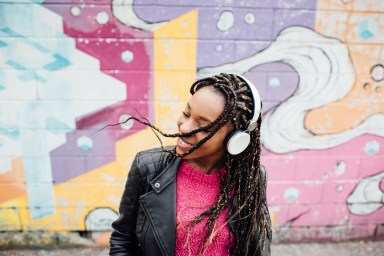Daily audio consumption in the first quarter of 2025 amounted to 3 hours and 54 minutes of daily1 listening across both ad supported and ad free platforms like radio, podcasts, streaming music services and satellite radio.
The Record is our quarterly report card on how U.S. consumers spend their listening day, fueled by data from Nielsen and Edison Research. While advertisers are constantly tracking changes in consumer behavior to improve the impact of their cross-channel marketing, The Record helps cut through with a unique representation of the time spent with ad supported audio.
Delineating between total listening (or viewing) and the ad supported universe is vital in today’s burgeoning media landscape where consumer choice grows by the day and marketers are looking at every available opportunity to cut through. In the first quarter of 2025 (Jan-Mar), ad supported audio represented 64% of total listening. This is similar to TV, where 72% of total viewing was spent on ad supported platforms, in Q1 according to Nielsen’s recently launched Ad Supported Gauge report.
Within the ad supported audio universe in the first quarter of 2025, consumers spent 66% of their daily listening time with radio, 19% with podcasts, 12% with streaming audio services and 3% with satellite radio. Compared to the fourth quarter of 2024, radio’s share of ad supported audio time was 1% lower this quarter, while podcasting’s share was 1% higher. This consistent demand for daily audio—and ad supported audio—varies proportionally based on age.
Radio accounts for anywhere from 47% of daily ad supported audio time among people 18-34 to 73% among 35+. Meanwhile, podcasts are the inverse, representing 15% of daily audio time for people 35 and older compared with 32% among those 18-34.
A quarterly snapshot: Edison Research Share of Ear®
This chart shows how Americans spent their time with ad supported audio in Q1 2025.
Explore even more audio insights with the additional data tables here.
The following tables detail how the share of radio audience varies by format, age, demographic and platform for the top 15 largest-reaching AM/FM radio formats. These differentiate between the share of all radio listening and the share of streaming listening specifically, which refer to the digital streaming of AM/FM radio stations.
Tracking radio listening by format
This chart compares which radio formats have the highest share of listening and how that differs between total radio (over-the-air and streaming combined) and the radio streaming universe.
Explore even more audio insights with the additional data tables here.
Explore even more audio insights with the additional data tables here.
With broad reach and ample ad space, it’s not surprising that audio remains a critical part of the media mix for companies with varying budget sizes. As we continue to see quarter over quarter, audio formats can have powerful reach with audiences of different demographics. Radio, in particular, has a strong hold with Black listeners. For more insights into how Black consumers are connecting to audio, download our latest Black Diverse Intelligence Series report: Engaging Black Audiences: How brands impact, grow and win with inclusion.
The Record provides a quarterly analysis of audio listening behaviors across the total radio universe. The charts represent average daily usage and share of listening for U.S. audiences.
For even more audio data and insights, explore our audio measurement solutions and connect with our team of experts.

Source:
1Edison Research, “Share of Ear®” Q1 2025



